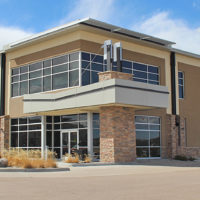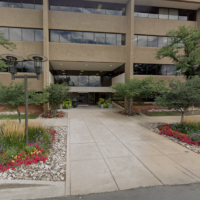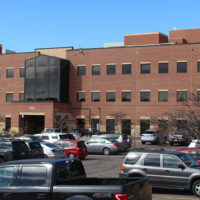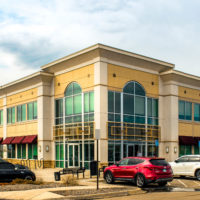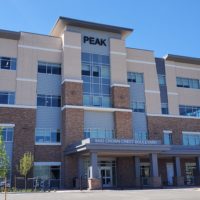There are a wide variety of back surgery types, including minimally invasive spine surgery, laser spine surgery, and robotic spine surgery. And there are many types of procedures, from spine fusion to ACDF. Regardless of the type of spine surgery for back or neck pain that you might be considering, arming yourself with information before making a decision to undergo spine surgery will help improve your chances of a successful outcome.
Spine surgery can be an effective treatment for many people who are struggling with painful back and neck conditions. It is usually only performed after non-surgical treatments, such as physical therapy or steroid injections, have failed to work. Newer surgical techniques, including minimally invasive spine surgery, are now available and can sometimes provide faster healing and less pain than traditional “open” spine surgery.
Read on to discover some of the different types of back surgery and what your doctor will be doing during each.
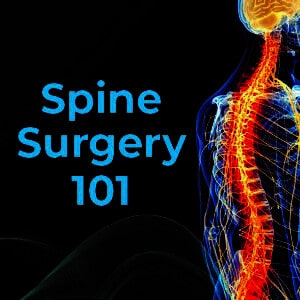 Spine Surgery 101: Is It Right for You?
Spine Surgery 101: Is It Right for You?
More than 7 out of 10 cases of neck or low back pain will improve without surgery, so it’s important to understand what surgery can do — and what it cannot do. This guide discusses in easy to understand language the science behind spine surgery and what to know to get the best outcome.
FAQs About Back Surgery Types
Continue reading below to learn more about the different types of spine surgery or click on one of these links to go directly to the information you are interested in.
- When should I consider spine surgery for my back or neck pain?
- Am I a candidate for spine surgery?
- What conditions benefit from spine surgery?
- What are the most common types of back surgery?
- What are spine surgery techniques?
- What is the difference between minimally invasive spine surgery vs. laser spine surgery?
- How do I choose a spine surgeon?
- How do I prepare for spine surgery?
- What are instructions for the day of spine surgery?
- What does recovery from spine surgery include?
- What is used for pain management after spine surgery?
Conditions We Treat
When should I consider spine surgery for my back or neck pain?
In specific cases, such as traumatic spine injury, surgery will be recommended immediately. However, in most cases of back and neck pain your spine surgeon will recommend managing your back pain or neck pain symptoms with conservative treatments first. Spine surgery is usually recommended only after more conservative treatments are tried and fail to provide adequate pain relief. It is important to note that conservative treatments are not always a quick fix – they may need to be tried over a period of many weeks before results are seen. Conservative treatments for back pain and neck pain recommended by your spine specialist may include:
- physical therapy
- acupuncture or massage
- oral anti-inflammatory medications
- steroid injections or other nonsurgical pain management procedures
- patient lifestyle changes, such as weight loss, smoking cessation, and control of medical conditions such as diabetes and hypertension
One thing Denver spine surgery patients should consider is that Colorado has one of the highest rates of spine surgery in the United States, according to the Dartmouth Atlas of Health Care. Nearly 1.5 people out of every 1,000 Medicare recipients in Colorado receive spine surgery vs. a national average of 1 per 1,000. This ranks Colorado in the 90th percentile for spine surgeries. The reason this is important is to ensure that you are selecting a Denver spine surgeon who has experience and can present you with the research supporting the decision for spine surgery as well as the expected outcome for your spine surgery, and in many cases, why surgery is not a good idea.
Am I a candidate for spine surgery?
When you first start experiencing back pain, neck pain or spine problems, your primary care physician or a pain specialist will likely recommend conservative treatments. If these are not effective, you will probably be referred to a neurosurgeon or orthopedic surgeon who specializes in spine conditions. After reviewing your medical history, the spine surgeon will talk with you to determine if you are a surgical candidate. It’s important to note that spine surgery is only effective if a structural cause for your particular pain can be identified. If you answer “yes” to many of these questions, spine surgery may be appropriate for you:
- Have you tried physical therapy? (It is important to note that physical therapy is not appropriate for all spine conditions.)
- Have you tried medications to reduce inflammation, relax supporting muscles, and/or reduce pain?
- Have you tried steroid injections or other nonsurgical pain management procedures?
- Have you had imaging tests such as X-ray, CT, or MRI of your spine and diagnostic injections?
- Has a structural cause of your pain been identified?
- Does your pain greatly diminish your quality of life or activity level?
What conditions benefit from spine surgery?
While many people visit a doctor for back pain or neck pain at some point in their life, they will more than likely be treated successfully with non-surgical treatments such as physical therapy or medications. For back pain and neck pain patients who do not respond to conservative treatments, spine surgery may be an appropriate treatment and your primary care physician may refer you to a Denver spine surgeon. New spine surgery procedures such as minimally invasive spine surgery can offer faster recovery in many cases.
Conditions that may benefit from spine surgery include:
- Spinal stenosis – this narrowing of the spinal canal may be treated with surgery due to greater improvements in pain reduction and function when compared to more conservative treatments.
- Bulging disc – bulging discs are sometimes called disc protrusions. They may cause pain if they press on an adjacent nerve root or the spinal cord.
- Cervical or lumbar disc herniation – disc herniation is most often caused by degenerative disc disease, but can also be caused by twisting or turning while lifting, or by injury or a traumatic event such as a fall. Surgical treatment of a herniated disc may result in less pain and greater long-term improvement than conservative care for this condition, which is sometimes called a slipped disc, ruptured disc or a pinched nerve.
- Degenerative disc disease (DDD) – one of the most common causes of lower back pain, DDD is usually treated conservatively. Disc replacement surgery may be required in rare cases.
- Spondylolisthesis – a condition where the bone in the lower part of the spine slips out of its proper position onto the bone below it. Surgery to fuse the slipped bones back into place in many cases may provide relief if a patient is symptomatic and treatments such as physical therapy, traction, or anti-inflammatory medications don’t work.
- Myelopathy – a condition in the neck or mid back in which the spinal cord is irritated or injured.
- Synovial cyst – a fluid-filled sac in the spine that has developed as a result of degenerative disc disease (DDD) and may compress nerves like a herniated disc.
- Facet arthropathy – a type of arthritis that affects the joints in the lower back. It can occur if joints in the spinal area become compressed or if there is inflammation in the fluid-filled disc that helps to protect bones located in the spine.
- Loss of motor or bladder control – conditions such as cauda equina syndrome, a rare condition that affects the nerves in the lumbar area, benefit from surgery. Surgery for these conditions reduces the likelihood of long-term issues.
What are the most common types of back surgery?
There are many types of spine surgery, but they all fall into one of two main categories:
- Decompression spine surgery relieves leg or arm pain being caused by pressure on or pinching of spinal nerves.
- Stabilization spine surgery provides strength and stability to the spine by eliminating motion, and often improves back or neck pain.
Back decompression surgery helps relieve pressure on a nerve along the spinal cord that is being pressured or pinched. Some common decompression spine surgery types include:
- Discectomy/Microdiscectomy: If you have suffered a herniated disc or any type of condition that results in a spinal disc compressing a nerve, your spine surgeon may need to perform a discectomy or microdiscectomy to relieve your pain. During a discectomy, your surgeon will remove a small portion of one of your facets, the connecting tissue between the vertebrae, to both relieve pressure on your nerve and provide access to the damaged disc. From there, your surgeon will remove the pieces of the disc that have herniated or protruded into the spinal column. Your spine surgeon also may need to cut a small hole in your lamina, the roof of the spinal canal.
- Facetectomy: The facet joints are the connections between the bones of the spine. Each spinal vertebra has four bony protrusions called facets. Two facets face upward and two face downward, and each interlocks with the vertebrae around them. The nerve roots pass through these joints to go from the spinal cord to the arms, legs and other parts of the body. These joints also allow the spine to bend and twist, and they keep the back from slipping too far forward or twisting without limits. Over time your facet joints can become misaligned and rub or pinch your spinal nerves, leading to facet joint pain. This condition often is caused by a type of arthritis called facet arthropathy.A facetectomy is a type of spine surgery to remove part of these facets to relieve pressure on your spinal nerves. Your spine surgeon will begin by removing a small piece of your lamina to get access to your facets The surgeon will then remove the smallest possible amount of bone to relieve the pressure on your spinal nerves.
- Foraminotomy: In some cases, a foraminotomy may be performed alongside a facetectomy. This procedure helps to relieve pressure on your spinal nerves, which exit your spinal cord through small holes called neuroforamina. Over time, these neuroforamina may get smaller, pinching the root of your spinal nerves. During a foraminotomy, your spine surgeon will examine the neuroforamen to figure out what’s blocking it. This may be bone, disc material, or other tissue that has grown into the passage over time. Your surgeon will remove enough of this material to relieve pressure on the nerve that’s being pressured.
- Laminectomy and Laminotomy: If the lamina, the bony arch of the vertebrae, is compressing your nerve, your spine surgeon may recommend one of these two types of spine surgery. A laminectomy removes the part of the lamina that is compressing the nerves in your spine. This procedure also may be performed in combination with another type of back surgery. A laminotomy creates small, targeted holes in your lamina above and below a compressed nerve to help relieve pressure.
The decompression spine surgery types may be performed through minimally invasive surgery or traditional open spine surgery. Conditions that may be treated with these procedures include:
| Condition | Foraminotomy | Laminotomy | Discectomy |
| Spinal stenosis | √ | ||
| Herniated/bulging discs | √ | √ | √ |
| Pinched nerves | √ | √ | √ |
| Bone spurs | √ | √ | |
| Sciatica | √ | √ | √ |
| Spinal arthritis | √ | √ | |
| Foraminal stenosis | √ | √ |
Stabilization Spine Surgery Types
Stabilization spine surgery is performed to reduce or eliminate the motion between the vertebrae that is causing pain. Stabilization procedures often involve the placement of plates, rods or screws. The two most common types of stabilization spine surgery are fusion and disc replacement.
Spinal Fusion: Spinal fusion is a tremendously common type of back surgery to treat back and neck pain. In particular, this treatment works when you have a vertebra that has become so degenerated that it isn’t supporting your neck or back anymore. Your spine surgeon will remove the damaged vertebra, leaving a gap between the two that surround it.
In order to keep those two surrounding vertebrae from collapsing into each other, doctors will put a piece of bone where the previous vertebra was. They’ll affix this in place with screws and metal plates, and as the body naturally heals, it will grow new bone around the graft. Within a few months, the two surrounding vertebrae and the graft will be joined into one solid piece of healthy bone.
Spinal fusion can be performed on just one vertebra, or level, or multiple levels. If fusion is performed to treat lower back pain, it is called lumbar fusion. Lumbar fusion can be further broken down into four primary types depending on how the surgeon accesses the spine: anterior lumbar interbody fusion (ALIF) is performed through the abdomen; posterior lumbar interbody fusion (PLIF) and transforaminal lumbar interbody fusion (TLIF) are both performed through the back and differ by what structural changes to the spine are made; and extreme lateral interbody fusion (XLIF) is performed through the side.
Anterior cervical discectomy and fusion, or ACDF, is the most common type of spine surgery that is used to treat neck pain caused by unstable or damaged vertebrae. SI joint fusion is a procedure that is used to stabilize the sacroiliac joint which can cause low back pain when it moves excessively.
Artificial disc replacement is a newer type of spine surgery that is growing in popularity. In between each of your vertebrae, you have a fibrous disc that helps to cushion and pad your vertebrae. In some cases, while your vertebrae may be healthy enough, your discs may have broken down and stopped properly padding the bones of your spine. When this happens, your spine surgeon might recommend disc replacement instead of spinal fusion.
During this procedure, your spine surgeon will remove the degenerated disc through a small incision in your neck or back. The surgeon will then insert a new custom-made artificial disc and attach it to the vertebrae that surround it. These artificial discs are usually made of two metal end plates with a plastic spacer in between. Artificial disc replacement is most commonly performed in the cervical region for neck and arm pain but is also being used more frequently in the lumbar region to treat lower back pain caused by degenerative disc disease. You can read more about cervical disc replacement in our blog post, Disc Replacement Surgery for Neck Pain Offers Many Advantages.
Like the various types of spine surgery that are used to decompress nerves, stabilization spine surgery can be performed through traditional open surgery or minimally invasive techniques. Stabilization procedures are used to treat these types of spine conditions:
| Condition | Anterior Cervical Discectomy and Fusion | Cervical Disc Replacement | Transoforaminal Lumbar Interbody Fusion | Lateral Lumbar Interbody Fusion |
| Spinal stenosis | √ | √ | √ | √ |
| Herniated/bulging discs | √ | √ | √ | √ |
| Pinched nerves | √ | √ | ||
| Bone spurs | √ | |||
| Sciatica | √ | √ | √ | |
| Foraminal stenosis | √ | |||
| Spondylolisthesis | √ | √ | √ | |
| Scoliosis | √ | √ |
What are spine surgery techniques?
Spine surgery is performed in several ways.
- Open surgery: The majority of spine surgery procedures are still performed traditionally as open surgery, with an incision that allows the surgeon to work directly on the spine.
- Minimally invasive spine surgery: About 30 percent of spine surgery procedures can be performed with minimally invasive techniques, including endoscopic spine surgery. Minimally invasive spine surgery also may be referred to as less invasive spine surgery or endoscopic spine surgery. (Sometimes, minimally invasive surgery is incorrectly labeled laser spine surgery or laparoscopic spine surgery.) When performing minimally invasive spine surgery, the spine surgeon makes a small incision (typically less than one-inch). The surgeon then uses special tools such as retractors, endoscopes, and microscopes that he controls to see into the incision and perform the actual procedure. Minimally invasive spine surgery typically results in less damage to the muscles around the spine, which can help reduce pain after surgery and lead to a quicker recovery.
- Laser spine surgery: Patients often do internet research using the term “laser spine surgery” due to heavy consumer advertising using this term. However, spine surgery performed with lasers is rare and used only in very specific cases. Most centers advertising laser spine surgery are actually offering minimally invasive spine surgery.
What is the difference between minimally invasive spine surgery vs. laser spine surgery?
As noted previously, minimally invasive spine surgery often is mistakenly called laser spine surgery by consumers. However, in most cases the actual procedure a consumer is researching is a minimally invasive surgery that does not involve a laser at all. Minimally invasive spine surgery is appropriate in about 30 percent of cases of back pain or neck pain. It involves the surgeon performing the procedure through a small incision with a miniature camera and specialized instruments. Because muscles are not disturbed during minimally invasive spine surgery, pain is often reduced and recovery times tend to be shorter.
Read more about the difference between minimally invasive and laser spine surgery in this blog post.
Learn more about minimally invasive spine surgery from the American Association of Neurological Surgeons.
Minimally invasive spine surgery is an option for many traditional spine surgeries, including discectomy, spinal decompression, and transforaminal lumbar interbody fusion (TLIF). Though laser spine surgery is a term commonly researched by patients, true laser spine surgery is used very rarely and never for degenerative spine disease, which involves spinal discs and accounts for the vast majority of back pain.
How do I choose a spine surgeon?
While neurosurgeons are often thought of for brain surgery or nerve surgery, all neurosurgeons are trained extensively in spine surgery as the brain and spine make up the central nervous system. Some neurosurgeons also complete fellowships in spine surgery.
In addition to treating structural spine issues, neurosurgical spine surgeons have special expertise and training to evaluate and address issues involving the spinal cord and the central and peripheral nerves.
While orthopedic surgeons also perform spine surgery, there is evidence that some patients may benefit from having their spine surgery performed by a neurosurgeon. Read more about neurosurgeons vs orthopedic surgeons for spine surgery.
Some things to consider when choosing a spine surgeon:
- Experience. While there is no magic number for this, most experts agree that an “experienced” surgeon is one who: (1) has five years’ experience performing the procedure; (2) has performed the procedure at least 30 times. However, depending on the procedure, a surgeon may only perform certain specialized or rare procedures a few times each year.
- Outcomes. Benefits of a more experienced surgeon include reduced surgical complication rates, lower infection rates, shorter hospital stays, more careful patient screening, and less chance a patient will need additional surgeries or revision surgery.
- Board certification. This means that a physician or surgeon meets nationally accepted standards for knowledge and practice, enabling the optimal quality of care to be maintained. If a spine surgeon is a neurosurgeon, he or she may be board certified by the American Board of Neurological Surgery.
- Training. Although all neurosurgeons are trained to perform all types of spine surgery, some neurosurgeons complete spine fellowship programs after completing their residency requirements and becoming board-eligible. Fellowships give some surgeons even more in-depth, specialized training. A fellowship often includes participation in clinical research, and the fellow may also be required to author a scientific or research paper.
In addition to experience and training, it’s important that patients feel comfortable with both the surgeon and his or her office staff.
How do I prepare for spine surgery?
If you are scheduled to have spine surgery, there are several things you can do to prepare that help facilitate better outcomes and an easier recovery.
- Learn as much as you can about your condition, your surgery, how to prepare for spine surgery, what to expect on the day of surgery and during recovery. Your Denver spine surgeon and care team are happy to answer any questions you have about your treatment.
- Talk with your spine surgeon about “pre-hab,” which might include a walking program and some exercises to strengthen legs and core that can help you alleviate pressure on your spine while you recover. This should be done with the guidance of your spine surgeon or a trained physical therapist, especially if you’re experiencing a lot of neck or back pain. Some insurance plans only cover a limited number of physical therapy visits, which may be better used for rehab after surgery, so be sure to check with your insurance plan and discuss with your spine surgeon.
- You may be asked to stop smoking prior to surgery, because smoking can interfere with lung function and may delay your recovery. Smoking also is linked to higher infection rates and higher rates of incomplete bone healing.
- You may be asked to stop using certain medications, such as aspirin or other blood thinners or non-steroidal anti-inflammatory (NSAID) medications such as Aleve, Advil, and ibuprofen one week or more before your surgery. Be sure to tell your surgeon about all of the medications as well as any natural supplements you are taking so he or she can determine if they will affect your spine surgery outcomes.
- Prepare your home, including stocking up on easy to prepare foods and asking a friend or family member to help prepare meals, check in on you, and drive you to physical therapy appointments.
- Schedule your follow-up appointments prior to spine surgery.
- You will need a friend or family member to drive you to and from the hospital, and stay at the hospital during your spine surgery.
- Talk with your spine surgeon about your recovery prior to surgery, including how to handle stairs if your home has them, the impact of twisting or bending, exercise, what you can and cannot lift, when you will be able to resume driving, when you can return to work on light duty or full time, and how to refill your medications.
Read more about Neurosurgery One’s unique Enhanced Recovery After Spine Surgery (ERAS) program to help patients prepare for spine surgery and recover more quickly with less pain.
What are instructions for the day of spine surgery?
On the day of your Denver spine surgery, you will be asked to not eat or drink anything after midnight the day before. Your surgeon and his or her office staff will provide you with a list of additional things to do on the day of surgery, such as showering with antibacterial soap, as well as items to bring with you to the hospital.
What does recovery from spine surgery include?
The length of your surgical recovery can vary depending on the type of surgery you have, your overall health, and whether you are eligible for the Enhanced Recovery After Surgery (ERAS) program.
Your spine surgery care team will discuss what you can expect during the days and weeks after spine surgery, including:
- when you can return to work
- when you can start driving
- when you can resume other activities such as climbing stairs, lifting, exercising, twisting and bending
- how much pain to expect
- what medications you may be prescribed
- how to refill your medications
- what symptoms are normal and which are considered red flags or cause for concern, and what to do about them, including when to call your surgeon
What is used for pain management after spine surgery?
Patients who are experiencing neck pain or back pain may be given a recommendation to take medications as an initial treatment before surgery. Patients may also be prescribed pain medications after surgery. Many types of post-surgical medications are available to help control pain, including non-steroidal anti-inflammatory drugs (NSAIDs), such as ibuprofen, and local anesthetics. Your spine surgery care team will choose the pain control medications that are best for you after surgery, both in the hospital and when you return home to recover. The team will also let you know if alternative pain control therapies are effective or recommended.
